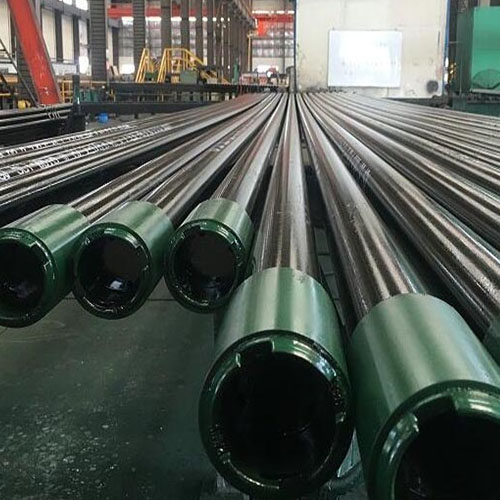Table of Contents
Advantages and Disadvantages of Two-Stage Venous Cannula in Cardiac Surgery
Two Stage Venous Cannula, also known as 2-Stage Venous Cannula or Oval Venous Cannula, is a crucial instrument used in cardiac surgery. Its design allows for efficient drainage of venous blood during cardiopulmonary bypass procedures. Like any medical tool, it comes with its own set of advantages and disadvantages, which are important for both clinicians and patients to understand.
One of the primary advantages of the Two Stage Venous Cannula is its ability to enhance venous drainage. By utilizing dual stages, this cannula ensures optimal removal of deoxygenated blood from the right atrium, facilitating improved cardiac function during surgery. The dual-stage design also minimizes the risk of venous collapse, particularly in cases of hypovolemia or low cardiac output, thus maintaining adequate blood flow to vital organs.
Moreover, the oval shape of the cannula allows for better positioning within the atrium, optimizing blood flow dynamics. This design feature reduces the likelihood of suction-induced trauma to the atrial walls, which can occur with traditional cannulas. As a result, patients undergoing cardiac surgery with a Two Stage Venous Cannula may experience reduced postoperative complications related to atrial injury.
Another advantage lies in the versatility of the Two Stage Venous Cannula. Its design accommodates various surgical approaches and patient anatomies, making it suitable for a wide range of cardiac procedures. Surgeons appreciate its adaptability, as it simplifies cannulation techniques and promotes more efficient surgical outcomes. Additionally, the cannula’s compatibility with both minimally invasive and open-heart surgeries enhances its utility in diverse clinical scenarios.
However, despite its advantages, the Two Stage Venous Cannula is not without its limitations. One notable disadvantage is the potential for air entrainment during use. The dual-stage configuration, while effective for blood drainage, can also inadvertently draw air into the bloodstream, increasing the risk of air embolism. Clinicians must exercise caution and employ proper priming and de-airing techniques to mitigate this risk effectively.
Furthermore, the oval shape of the cannula may pose challenges during insertion, particularly in patients with distorted atrial anatomy or pre-existing cardiac abnormalities. Achieving optimal positioning without causing tissue trauma requires skill and experience on the part of the surgical team. In some cases, alternative cannulation strategies may be preferred to minimize procedural complications.
Another consideration is the cost associated with using Two Stage Venous Cannulas. While they offer distinct advantages in terms of surgical performance and patient outcomes, their specialized design and manufacturing process contribute to higher procurement expenses. Healthcare institutions must weigh the benefits against the financial implications when incorporating these cannulas into their cardiac surgery protocols.
In conclusion, the Two Stage Venous Cannula represents a significant advancement in cardiac surgical instrumentation, offering enhanced venous drainage and improved surgical outcomes. Its dual-stage design and oval shape provide advantages such as optimized blood flow dynamics and reduced risk of atrial trauma. However, clinicians must remain vigilant regarding potential drawbacks, including air entrainment and procedural complexity. By carefully evaluating the advantages and disadvantages of Two Stage Venous Cannulas, cardiac surgical teams can make informed decisions to optimize patient care and procedural efficiency.
Understanding the Design and Functionality of Oval Venous Cannulas
Venous cannulas are integral components of medical equipment used in cardiopulmonary bypass procedures during cardiac surgery. Among the various types available, the two-stage venous, also known as the 2-stage venous or oval venous cannula, stands out for its unique design and functionality. Understanding its intricacies is essential for medical professionals involved in cardiac surgery.
The two-stage venous cannula features a distinctive oval shape, which sets it apart from traditional cannulas. This design is purposefully crafted to optimize venous drainage during cardiopulmonary bypass. Unlike conventional circular cannulas, the oval shape allows for greater surface area contact with the vessel wall, facilitating improved blood flow.
One of the primary advantages of the two-stage venous cannula is its ability to reduce turbulence within the bloodstream. Turbulent flow can Lead to complications such as hemolysis or clot formation. By minimizing turbulence, this cannula helps maintain the integrity of blood cells and prevents the formation of potentially harmful clots.
Another key feature of the two-stage venous cannula is its dual-stage configuration. This design comprises two distinct sections: a distal portion with multiple side ports and a proximal portion with a single central port. The distal portion is positioned within the right atrium or superior vena cava, while the proximal portion extends into the inferior vena cava or inferior atrium.
The dual-stage configuration serves a crucial function in optimizing venous drainage. The distal ports allow for the aspiration of blood from multiple points within the atrium or vena cava, enhancing the efficiency of drainage. Simultaneously, the central port in the proximal portion ensures a continuous flow of blood through the cannula, maintaining hemodynamic stability throughout the procedure.
Furthermore, the two-stage venous cannula offers flexibility in placement, allowing surgeons to tailor its positioning based on individual patient anatomy. This adaptability is particularly advantageous in complex cardiac cases where precise venous drainage is paramount for successful outcomes.

In addition to its functional benefits, the oval venous cannula is designed with patient Safety in mind. The smooth, atraumatic surface minimizes the risk of vessel trauma during insertion and removal, reducing the likelihood of postoperative complications such as bleeding or thrombosis.
The versatility and effectiveness of the two-stage venous cannula make it a preferred choice for many cardiac surgeons worldwide. Its innovative design, coupled with optimized functionality, contributes to improved patient outcomes and enhanced surgical precision.
In conclusion, the two-stage venous cannula, also known as the oval venous cannula, represents a significant advancement in cardiac surgery equipment. Its unique oval shape, dual-stage configuration, and atraumatic design contribute to superior venous drainage, reduced turbulence, and enhanced patient safety. By understanding the intricacies of this specialized cannula, medical professionals can optimize its use in cardiopulmonary bypass procedures, ultimately improving outcomes for patients undergoing cardiac surgery.
